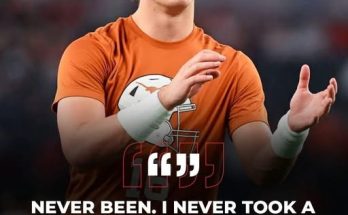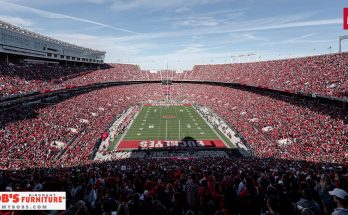In a stunning development that could reshape how fans and analysts evaluate the Arizona Cardinals’ 2025 NFL Draft strategy, multiple sources confirmed the team had knowledge of a serious injury to one of their top cornerback prospects before selecting him in the second round. The revelation has ignited questions around the Cardinals’ front office transparency, risk management, and long-term strategic planning.
This report dives deep into the timeline of events, the identity of the injured player, medical concerns surrounding the injury, front office motivations, and the larger implications for Arizona’s future.
The Draft Selection That Raised Eyebrows
With the 38th overall pick in the 2025 NFL Draft, the Arizona Cardinals selected former Georgia standout Javon Baker Jr., a 6’1″, 193-pound cornerback who had been projected as a late first-round talent due to his elite athleticism, footwork, and ball-hawking tendencies. However, Baker unexpectedly slipped out of the first round, and his slide now appears to have had a medical reason.
According to sources with direct knowledge of the Cardinals’ pre-draft evaluations, team doctors had identified a partial ligament tear in Baker’s right knee during routine medical assessments at the NFL Combine in February. While the injury was not made public at the time, the internal medical grading flagged Baker as “a moderate risk for short-term availability in training camp and long-term durability.”
Yet, general manager Monti Ossenfort and head coach Jonathan Gannon pushed forward with the pick, confident in Baker’s upside and their ability to manage his recovery.
Pre-Draft Smoke: Why No One Knew
The first question asked by many analysts: Why didn’t this come out sooner?
NFL teams often have access to extensive medical evaluations, but public disclosure of that information is rare. In this case, league insiders say that Baker’s representation worked aggressively to keep the injury under wraps, sharing only a limited version of medical documentation with select teams.
“There were whispers, but nothing solid,” said one NFC scout. “You heard rumors about ‘knee swelling’ or ‘precautionary rehab’ — but no one had the full picture unless they were in the room during his medicals at the Combine.”
The Cardinals, by virtue of their full participation in the medical testing, were among the few franchises with a complete understanding of Baker’s condition. Yet the team never publicly acknowledged the injury during their post-draft press conferences or in statements to fans.
Jonathan Gannon’s Risk Tolerance
Head coach Jonathan Gannon, a former defensive coordinator with a strong background in secondary play, reportedly signed off enthusiastically on the Baker selection despite the red flags. According to internal sources, Gannon believed the Cardinals’ new player performance team, expanded this offseason with the addition of orthopedic consultant Dr. Xavier Holt, could shepherd Baker’s recovery process effectively.
“Coach Gannon believes in building with toughness and trust,” said an assistant on the defensive staff. “He sees Javon as a foundational player, not just a one-year contributor. The injury? He thinks it’s a bump, not a barrier.”
This philosophy mirrors previous moves under Gannon’s tenure, where the Cardinals have taken calculated risks on players returning from injuries, such as edge rusher BJ Ojulari and tackle Paris Johnson Jr., both of whom dealt with injury concerns before being drafted.
A History of Injury Gambles
The Cardinals have not shied away from rolling the dice on injured prospects. While sometimes successful, the track record is mixed.
- BJ Ojulari (2023): Dealt with a lingering knee issue but has become a rotational pass rusher.
- Rondale Moore (2021): Known for dynamic playmaking but has struggled with repeated hamstring and groin issues.
- Kyler Murray: Although not a draft concern, his ACL recovery shaped the Cardinals’ 2023 and 2024 seasons.
The difference this time? The Cardinals are in a rebuild window, and making a high draft pick on a potentially unavailable player could cost them valuable development time.
The Medical Details: What We Know
Dr. David Chao, a former NFL team physician and current injury analyst, reviewed publicly available footage and medical whispers surrounding Baker.
“Based on what’s being described as a partial MCL tear, this is not an injury that necessarily ends a career,” Chao said. “However, it’s the context — was it a clean tear, is there any meniscus involvement, was it chronic or acute — that determines recovery.”
Sources say Baker’s injury occurred in early January during Sugar Bowl practices. Georgia reportedly downplayed it as “routine soreness,” but internal staff knew more. The Cardinals’ medical team projected a 10-to-12 week recovery period with full return expected by late July.
Still, missing OTAs, mini-camp, and potentially the first days of training camp could stunt Baker’s rookie integration.
Front Office Justifications
When asked in post-draft interviews about the decision to take Baker, general manager Monti Ossenfort said, “We got a great football player at a tremendous value. Javon checks all the boxes we look for — character, work ethic, athleticism. We’re thrilled to have him.”
That answer now feels sanitized in hindsight.
Privately, the Cardinals believe Baker will be ready to compete by the start of the regular season. “We’re playing the long game,” a front office executive said. “We didn’t draft him for May. We drafted him for five years.”
There’s also a belief that the team might’ve had competition from the New Orleans Saints and Pittsburgh Steelers, both of whom were rumored to be considering Baker in the second round. To the Cardinals, the reward outweighed the risk.
Fan Backlash and Transparency Issues
Arizona fans have responded to the news with a mix of confusion and concern.
“They’ve had years to get this rebuild right,” said longtime Cardinals fan Miguel Ortega. “You can’t blow a premium pick on someone who might not even hit the field till midseason — not if you’re trying to win the division in the next couple of years.”
The Cardinals’ PR staff has not released a statement acknowledging the injury since the report was made public, a move some analysts see as tone-deaf given the growing demand for transparency in professional sports.
NFL franchises are under increasing pressure to communicate injury concerns more clearly, especially when those injuries affect first- and second-round picks.
The Bigger Picture: Cornerback Depth Now a Concern?
The cornerback position was already a need for Arizona entering the draft. After losing veteran Antonio Hamilton Sr. in free agency and releasing former second-round bust Marco Wilson, the team is thin behind projected starter Garrett Williams.
If Baker misses substantial time, the Cardinals may be forced to rely on undrafted rookie Khyree Jackson or sign a free agent like Casey Hayward or Eli Apple to plug the gap temporarily.
This isn’t just a medical gamble — it’s a roster construction risk.
NFLPA and Agent Reactions
While the NFL Players Association has not issued a statement, Baker’s agent, Ron Slavin, defended the Cardinals’ process.
“Javon passed all necessary physicals and remains fully committed to being a Day One contributor,” Slavin said in a prepared statement. “There’s no story here except that the Cardinals got a steal.”
That assertion will be tested in the months ahead.
Looking Ahead: Training Camp Watch
All eyes will now turn to the Cardinals’ training camp in Glendale, where Baker’s level of participation will become a focal storyline. If he practices by mid-August and earns a starting role by Week 1, the risk may appear justified. But if setbacks occur or Baker ends up on the PUP (Physically Unable to Perform) list, this could spark front office scrutiny.


